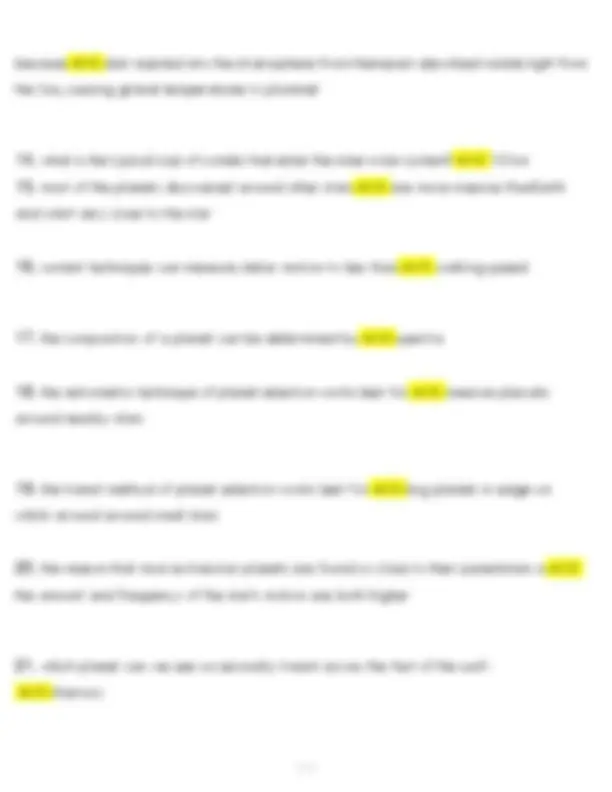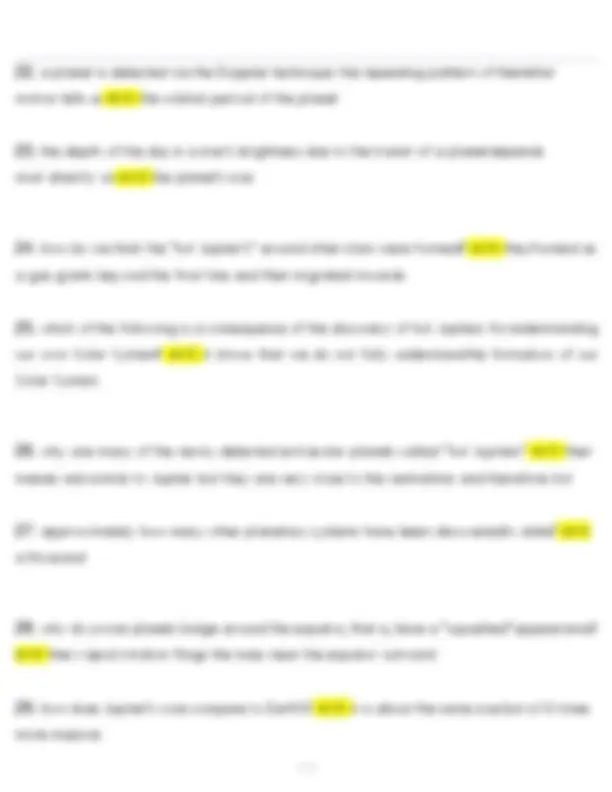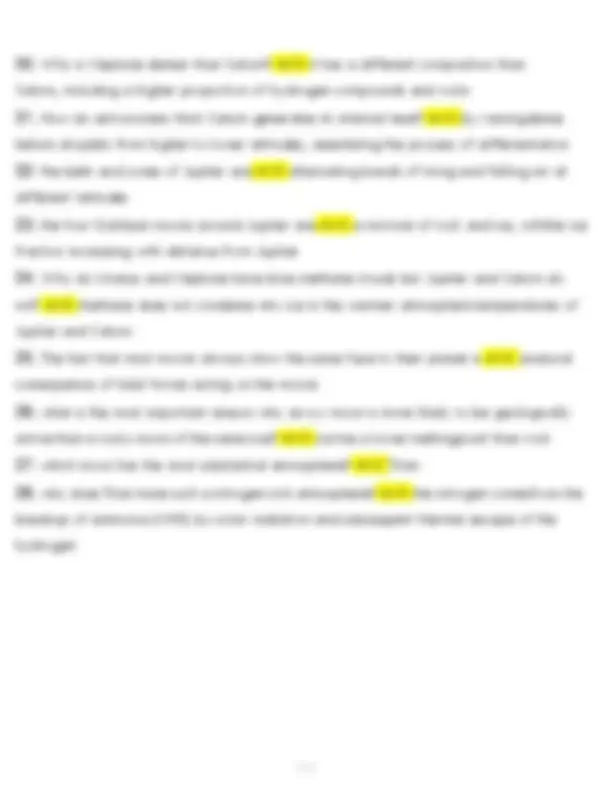





Study with the several resources on Docsity

Earn points by helping other students or get them with a premium plan


Prepare for your exams
Study with the several resources on Docsity

Earn points to download
Earn points by helping other students or get them with a premium plan
Community
Ask the community for help and clear up your study doubts
Discover the best universities in your country according to Docsity users
Free resources
Download our free guides on studying techniques, anxiety management strategies, and thesis advice from Docsity tutors
AEA Quiz Questions and Answers 1. what do asteroids and comets have in common? ANS most are unchanged sincetheir formation in the solar nebula 2. why do asteroids and comets differ in composition ANS asteroids formed insidethe frost line, while comets formed outside 3. what is the size of the largest asteroid? ANS 1,000 km 4. the combined mass of all the asteroids in the asteroid belt is ANS less than thatof any terrestrial planet 5. the large gaps in the asteroid belt (often called Kirkwood gaps) are causedby ANS orbital resonances with Jupiter 6. if we know the size of an asteroid, we can determine its density by ANS deter-mining its mass from its gravitational pull on a spacecraft, satellite, or planet 7. why aren't small asteroids spherical in shape 2 / 3 ANS the strength of gravity on small asteroids is less than the strength of the rock
Typology: Exams
1 / 6

This page cannot be seen from the preview
Don't miss anything!




ANS the strength of gravity on smallasteroids is less than the strength of the rock